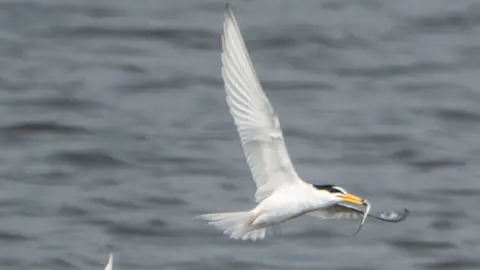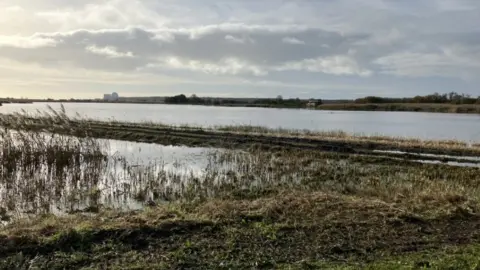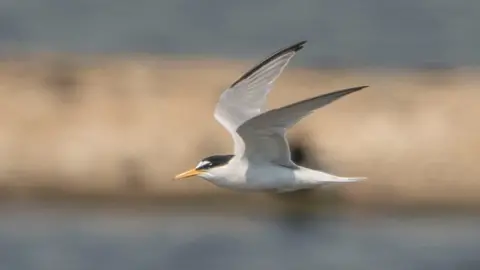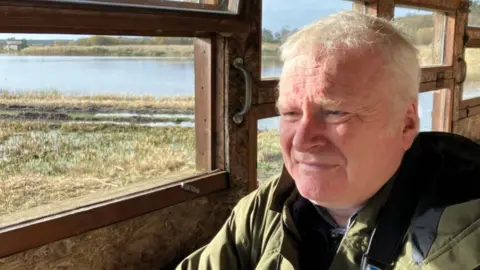RSPB Minsmere: Endangered birds make restored site their home
 David Borderick
David BorderickA three-year project to create and restore breeding and feeding sites for endangered birds has been hailed a success after some began nesting there.
For the first time since 2019, eight pairs of little terns nested on islands at RSPB Minsmere in Suffolk.
Although their young did not survive, site manager Nick Forster said: "We are hopeful that they will reappear in future years and do really well."
The restored site had also seen 27 avocet chicks successfully fledge.
The reserve, near Saxmundham, has seen the terns and other species nest on the islands this summer at the reserve's "Scrape", which consists of a number of shallow lagoons with a series of islands dotted throughout.
This lagoon habitat supports a wide variety of invertebrates such as shrimp, fly larvae and aquatic worms, providing important feeding areas for breeding wading birds and seabirds with their chicks.
 Guy Campbell/BBC
Guy Campbell/BBCThe site was originally created in the 1960s with avocet in mind - the bird featured on the RSPB logo.
The idea was to landscape part of the nature reserve to encourage the birds to breed, as at that time the species was critically endangered.
However, after decades of heavy use by many species, the Scrape's lagoons and islands needed significant rejuvenation to maximise their benefit to coastal birds.
Restoring the landscape was part of the LIFE on the Edge programme, which has seen the RSPB and the National Trust working to improve coastal nature sites in England.
 David Borderick
David BorderickWork on the Minsmere Scrape enhancement project started in the winter of 2021.
It included the creation of new shingle-covered islands to encourage ground nesting birds, such as the little tern, to breed regularly at the site, and installation of new water level controls enabling staff to control the depth of the water, and move it around the site as needed, which is important when dealing with drought or flood conditions.
The RSPB is pleased with the results so far.
 Guy Campbell/BBC
Guy Campbell/BBCMr Forster said: "We had eight pairs [of little terns] nesting on one of the newly re-profiled islands, which was incredibly exciting.
"They didn't nest the year before anywhere on the site, so that was good. And we are hopeful that they will reappear in future years and do really well."
He said avocets had also had "a pretty successful year".
"This year, 27 chicks fledged, which is bang on target for us.
"This is part of the whole range of east coast wetlands which are really important for birds. We have applied to have them designated as a World Heritage Site because they are an important part of what is known as the east Atlantic flyway, where birds migrate north and south in huge numbers."
Wez Smith, senior project manager for LIFE on the Edge, said: "After years of planning... it's great to see the iconic Minsmere Scrape rejuvenated for new generations of birds and people to enjoy.
"The enhancements at Minsmere will secure this thriving coastal wetland for the seabirds, waders and a host of wildlife for the future, all visible for people to see, hear and be inspired by."
The project has received funding from LIFE on the Edge and the National Grid Landscape Enhancement Initiative.

Follow East of England news on Facebook, Instagram and X. Got a story? Email [email protected] or WhatsApp us on 0800 169 1830
